On the fifth episode of Canna Cribs, Growers Network and the Canna Cribs crew hopped on over to beautiful Humboldt county to take a closer look at Honeydew Farms and interview Alex Moore.
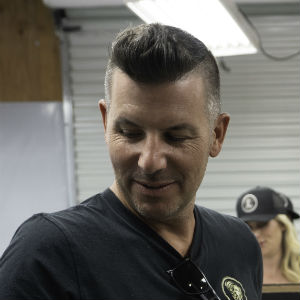
The following is an interview with industry experts. Growers Network does not endorse nor evaluate the claims of our interviewees, nor do they influence our editorial process. We thank our interviewees for their time and effort so we can continue our exclusive Growers Spotlight service.
To skip to any section within this article, click the links below:
Canna Cribs Episode 5
Introduction
Nate: Hi, my name is Nate, owner of Growers House, one of the top suppliers of cultivation equipment in the world. I help growers source equipment and put together some of the largest, most advanced cannabis growing operations. I am constantly looking for the top products and methods needed to grow the best cannabis. Join me on a tour where I get inside access to the industry’s leading cannabis grow ops. This my friends, is Canna Cribs.
Nate: Welcome everyone, it’s Nate with Canna Cribs. And we’re here at Episode Five in Humboldt County and we’re at Honeydew Farms which is on a ranch that’s hundreds of acres, and on it they cultivate an amazing amount of cannabis. I’m gonna go meet up with one of the owners, Alex, so I can see how he runs such an awesome farm. Come join me.
Interview with Alex
Nate: So after a long day of traveling, we’re finally here at Honeydew Farms, and I’m here with Alex, one of the owners of Honeydew Farms. Please introduce me to Honeydew Farms and how you started growing. How did you start getting into the cannabis industry?
Alex: I got an opportunity to come out and work on a farm one summer back in ‘91 here in Honeydew. It was quite an experience. Back then, eradication efforts out here were heavy, and nobody was growing in greenhouses at the time. Basically, we’d start our plants in the greenhouse, and as quickly as we could get them out into the woods, that’s what we did.
Alex: I was lucky and I got here at the right time. Real estate values were super low. It was before the big real estate bubble happened. And so we were able to get in early and go to the bank and leverage our property and buy more property, leverage that, buy more. And so we ended up getting into commercial real estate, opened a cocktail lounge, opened a restaurant thinking that this was a good fallback for us when cannabis went away. Because from the beginning when I moved here, “This is the last year man” is what everybody was saying. Then ‘96 happened “It’s over, this is it, it’s over!” and that was far from true.
Nate: And that leads me to my next question. What is the organizational structure of Honeydew Farms? I know that you’re a co-owner along with your wife I believe?
Alex: Right. So one thing that we feel is… unique to our farm is that we are, even though we’re a large farm, we’re a single family-owned farm. We didn’t bring on any investors, we don’t have a venture capital fund that we can tap into. It’s basically me and my wife Miranda, and our team that works under us. We have a great team this year. We’ve got people who have been with us for several years, and then we’ve got people who this is their first year in cannabis. This is their first year on a cannabis farm.
Alex: When I moved to Humboldt originally, I didn’t move here to grow cannabis. I moved here because I fell in love with the landscape. And then I learned to grow cannabis, and now I love growing cannabis. We’re deeply connected to our ranch here and we felt really lucky to get it. I feel that if I sold it, we’d never be able to get something like this again. My dream, and I know Miranda’s is, that someday our kids will be able to run the farm. So that’s our plan.
Genetics
Nate: Wow, Alex. This is the first greenhouse of the day and that was kind of a crazy adventure getting to your farm. I had to drive an hour and a half through the redwoods on this windy road probably going 20 miles per hour, away from Eureka, which is only 30,000 people, and now I’m like in the middle of the shire of cannabis. It has that old Humboldt feel, and it’s still holding onto that character I think that really describes Humboldt.
Alex: Absolutely. I think the comparison a lot is that Humboldt is the Napa Valley for the wine industry of cannabis. I definitely agree with that. The climate here in particular, the hot days, the cold nights, really contribute to growing some of the best cannabis in the whole world.
Nate: So let’s start off with genetics for you guys. How many different strains are you growing on this facility?
Alex: This season I think we’re right around 40.
Nate: These… we’ll call them clones… coming into your farm, it sounds like even a few years ago when the market was different, those were things you’d just buy from a nursery. But you guys are doing in house now, doing your own cloning.
Alex: Yeah. That was definitely when we were a much smaller footprint. We were sourcing out our clones because we didn’t really have the space to do it at the time. Now that we’ve expanded significantly, sourcing clones from other companies is just too expensive, so we’re just doing it in house. We’re streamlining and diversifying a little bit. And yeah, we’ve kind of taken our genetics and propagation in house.
Alex: We’re using a rockwool cube. I think Grodan is the brand we’re using. Then we’re actually using a Radix product, which is like a hormoning solution which you dip the rockwool cube into, take our cutting, dip that in there, plug that in, put it on a shelf under fluorescent strain. Depending on the strain, give it ten days to two weeks. Once you see the roots popping out of the bottom, then it’s time to take it up into one of our greenhouses, our nurseries, then we transplant it into soil.
Nate: But you’re having pretty good rooting success with your current methodology right now?
Alex: This year we nailed it. We have hardly any loss at all in our cloning. Our team did an amazing job.
Nate: That’s beautiful.
Vegetation
Nate: Let’s jump into that veg process you were talking about. I really want to know about the methodologies and the products that you’re using that work so well for you guys.
Alex: Once we have it rooted, a rooted clone or a rooted cutting, we take the cube and we transplant those into a two gallon pot. The two gallon pot, we use potting soil. Right now we’re using Royal Gold’s Kings Mix. That’s just the soil of the season. We then basically will set up a table and we’ll take the Great White we’re talking about, take the cube, dip it in the Great White, then we’ll transplant it into the two gallon pot. The mycorrhizae in the Great White really helps the roots take off and helps with the basic stress of the plants.
Alex: As we go, we always add amendments. Any of the soil companies… any of their amendments that come in the soil, they only last for so long. Then you’re going to need to add amendments or liquid feed with them, so. Depending on if they’re going to go into light dep, we’ll transplant them into a 2 gallon pot, we’ll veg them for 4-6 weeks. If they’re going to be going into our full-term gardens, we’ll transplant them into a 3 gallon pot and then grow them for about 6 weeks again in the greenhouse and then we transplant them out into the field.
Nate: I would love to hop into one of these Agratech greenhouses that you said you had and maybe talk a little bit more.
Alex: Yeah, wanna do it?
Nate: Sure.
Alex: Let’s check it out.
Alex: Well we’ve got an acre and a half of greenhouse on the entire ranch. We went to this Agratech cold frame last year and I’m really happy with it. Kind of like the idea of having a smaller greenhouse where it’s a little easier to control the environment. What’s really nice about them is that when you get the kit, everything lines up. Every bolt hole lines up perfectly. When you’re putting together a frame like this and things don’t line up, it can definitely be a pain in the ass. And so we’re able to manually roll up our sides to six feet. Basically it’s almost like having a convertible greenhouse. We roll the sides up, we get nice fresh air blowing through, and when the weather cools back down at night, we manually roll the sides back down.
Nate: And I wanted to go over in more detail about your nutrient regimen. What are these plants being fed? I want to hear about that.
Alex: The plants are tapped into the amendment mix. So we’ll send the soil to a lab, they come back with what it’s lacking, what it still has leftover from last year. We pass that over to our friend who owns TeaLAB, and then he builds us an amendment mix that is specific for that bed.
Alex: When we pull the pot off the roots, and the roots are nice and healthy and look great, we put that right in. If they look like they could need a little bit more love, we go right back to that Great White mycorrhizae and we put a little bit of that in the hole, plop it in on top. Then, once it’s in, we like to come in with an organic fertilizer. After that, just to keep the plant happy, we use the BioMarine and the BioGrow. We also use Vital Garden’s VitalGrow and their Vital Mag in that process as well. Once the plants get tapped in, we back off the food, because you don’t want to over-fertilize a plant.
Flowering
Nate: Alex, so we’re at the River Flat. One of the many sites you have on property. Why do you guys call it the River Flat?
Alex: Uh, cuz it’s a big flat right along the river. We keep it basic.
Nate: Ok, that makes sense. So you were saying this field is grown from seeds, is that correct?
Alex: This is our seed section. Historically speaking, when we were originally building the farm out, we were kind of spreading out our greenhouses to capture different microclimates. So what happens up on the ridge is going to be very different from what happens down here on the river.
Nate: I noticed a lot of these plants are growing in pots, like tan Smart Pots. So when you were talking about a 20 year old soil, how do you do that with Smart Pots? Fabric pots?
Alex: So the fabric parts actually hold up pretty well. We haven’t gotten to the point where we’ve had to replace any of them yet. This is year 5 down here. What I like about the Smart Pot is that for one it is a fabric pot. So when you’re getting it here, the cost compared to a plastic pot of the same size is a fraction of it. The pots do actually allow the roots to breathe a little bit. So I kind of feel like in terms of plant stress, when the roots get to the edge of the pot, rather than hitting hot black plastic, it hits the fabric, which, like I said, gives it a bit of air. So you don’t get the browning roots around the edge.
Nate: One of the most unique things about your ranch is that you have these Scottish highland cows, these furry cows, I’ve never seen before. They’re so cute. I thought that maybe you’re a rancher and you slaughter them for beef, but it turns out you’re using them for something entirely different.
Alex: Yeah we do. Actually we use them to manage the ranch. So the cows are essential for keeping the ranch grazed off for fire prevention especially. The Highlands, we’re probably up to the forties. We actually have a couple herds of cattle up here on the ranch. We have the Scottish Highlands and then we also have Belted Galloways too. Some exotic cows to go with our exotic strains.
Nate: That’s about as organic as it gets.
Alex: Yeah, it’s pretty cool.
Nate: So Alex, is there a reason why you chose to do hand watering for all of your fields?
Alex: Well originally, it was because the state hadn’t finalized its rules basically. So the county gave us a permit and we didn’t know exactly how the state was going to have us break our permits up. So we didn’t want to put in an irrigation system that we were going to have to tear out if the rules changed. So we’ve been hand watering ever since. The nice thing about hand watering is that it gives us complete control of each specific plant.
Nate: What goes in this water we’re talking about? Are you adding any other nutrients in flower?
Alex: Towards the end of flower we use organic liquid fertilizers. The same that we’re using in our beds. We’re using Vital Bloom this year which comes from Vital Garden Supply. Another product we’re using here comes from Sensational Solutions. A friend of ours, Marty, owns the company. We really like to support local companies. One thing I really like about Marty’s product is that it’s micronized. Basically you mix it with water, it breaks down really well, you don’t have any clogging of emitters or your hose. We like to start with his Grow, then we go into his Tranzition, this product right here. It was really amazing how it slowed down the vegetative growth from the transition from veg to flower, and it really helped the plants branch out a lot. Once we’re done with Tranzition, we roll into his Blissful Bloom. We use all of these products on top of the amendments we’ve already put into the soil earlier this season.
Nate: I understand that Luke from TeaLAB is actually here today, because he’s here quite a bit doing some soil sampling up on the terrace. Why don’t we go say hi to Luke and see more about that soil sampling?
Alex: Sounds good.
Soil Sampling
Nate: So Luke, I’ve already heard so much about TeaLAB because you guys are so integral into this farm. So what is TeaLAB? I need a good definition of this.
Luke: TeaLAB. Well it comes from compost TEA. Compost tea being a living fertilizer. The microbes in tea are going to help unlock nutrients that we’re putting into the soil. The LAB from TeaLAB is Luke Ander Besmer, my initials. It’s my stamp, my way of putting my stamp on the company.
Nate: From what I understand, you guys are actually sending out soil samples to laboratories. So it’s kind of a double entendre.
Luke: Yes, absolutely. It worked out really well.
Nate: So how do you do something like that for someone like Alex on a farm like this?
Luke: So what we’ll do is come out, dig from the top of the pot to the bottom of the pot, scrape the side of that hole so we have a nice stratified layer of soil. Then we’ll mix a bunch of those together so that we’ll have a composite sample. And that composite sample goes off to the laboratory. About a week later I’ll get results back, and with those results, I’ll go ahead and tailor a custom fertilizer blend for the soil.
Nate: Ok, so that’s what plants just like this are thriving on. And this plant looks great over here. If you see how these nugs are stacking and their coloration is very purple, it’s beautiful.
Luke: Absolutely. This plant especially. Whoever bred this knows what they’re doing.
Nate: For a farm like this, why would Alex choose TeaLAB over traditional liquid nutrients?
Luke: Cost and ease of use. And the quality that you get out of organic nutrients. The cost to grow a gram when you’re doing this TeaLAB is in the 4 to 5 cents range. So the numbers work out really well in this day and age when farms need to keep their costs as low as possible.
Nate: What’s your background? Do you have some type of certification maybe?
Luke: Yeah, I am a certified crop advisor. But well beyond that, I have a degree in Biology, a minor in botany from Humboldt State University. So we’ve practically studied smoking weed, just kidding. But that combined with… I worked at a large scale propagation facility down in San Diego for a couple of years. That’s where I learned about testing and how we could use science to really give us some answers. I moved back up here and I saw how many people were throwing out their soil every run, and it’s extremely wasteful. I knew that with testing and proper planning, that we could reuse that soil. We’ve saved people thousands if not millions of dollars at this point.
Nate: So you’re a certified crop advisor. Do you work with just cannabis or do you work with other crops as well?
Luke: Other crops as well. That’s the thing about this organic method. You can use it on all kinds of plants.
Nate: And you’re also doing, if I understand correctly, some IPM, Integrated Pest Management over here. So what have you guys used on Alex’s farm here?
Luke: Safe stuff that’s low cost like sulfur. It’s very effective. Beyond that, Regalia and Grandevo. Two great products for keeping plants strong and keeping pests down. One of the main things though is monitoring and just having eyes on every plant. Walking around the gardens and making sure that there are no bugs. The second that you see a bug, you act on it. You make sure that infestation doesn’t grow any further than it has to.
Luke: One thing that really worked well this year was keeping an eye on things in the nursery. We wanted to make sure that no plants getting into these fields had any bugs on them. And we were successful. You can see it in the plants now. I have been monitoring this place every other week for the past several months. And I have not found a mite, russet mite, aphid, or thrip. This is the cleanest garden I’ve seen in a long time, which is a real testament to the hard work that these guys are doing out here. Because it’s such a massive garden, you would expect to find some kind of insects.
Nate: Luke, with your extensive knowledge about plants and bugs and their interactivity, I think we’re going to be talking in the future with regards to the Growers Network Pest and Disease Database software. But on that note, I’m going to go meet up with Alex and see the next step in the process for these cannabis plants.
Drying
Nate: Out of the flower room, into this room. I know this is where those plants are headed even though it’s empty now because this is your drying room. As soon as those plants get chopped down, they’re coming in here right?
Alex: Yeah, this is one of our many drying rooms. This will be the first stop after harvesting in the field. We generally, in the field, will buck a plant or branch to about this length, bring it in here, and it will hang it in here for… we like to get them into totes in about 5 days. You walk up to the cure room, you feel the first few rows, oh yeah, they feel good, they feel crispy, everything’s good. And as you start taking it down getting deeper here into the middle, it starts getting wetter and wetter. And you can literally have problems that you have in the field… can happen here in the drying room too, where if you don’t have your humidity and airflow correct you can actually get powdery mildew starting in the drying room, and literally blow up and destroy your crop.
Nate: Wow, yeah, you don’t want that to happen. So what’s part of your recipe for drying and curing, because I know everybody does it differently? And like you were saying, it can make or break you.
Alex: The first 12 hours we like to raise the temperature a little bit in our rooms to about 85 degrees. Then we will put multiple dehumidifiers in so that we can get the leaves to drop within the first night. That way you know that just visually you can see that the process is happening. Once you get that point is when you can start to back off of things. Then you just really got to get in here, crawl all the way through, pop up in different spots, and feel the flower throughout. Because it can be drier there than in the middle, and that’s what’s cool about these dehumidifiers, because we can literally wheel them wherever we want all over the room, we can take them down to the packaging room, we can take them across the river to the other drying zone, so that’s kind of why we’re using this company right now, Ideal.
Nate: So you’re measuring moisture by hand and are you using a meter maybe?
Alex: We use moisture meters, and I’m kind of old school, I like to put my hands on things.
Nate: It’s the subjective touch of a longtime grower.
Alex: So that’s what we’re using the meter for. No, the moisture is in the middle of the bud… and I’m evolving which is the good news. But yeah, I’m pretty old school in my curing.
Nate: Well, after this room they’re headed downstairs into that giant burping room that we came through. So, why don’t we head down there to take a look?
Curing
Nate: Alex, another room where I know that a lot of action is going to be happening in here and you guys are just preparing for it. I mean, look at how many totes you have back here. These have built up over the years, haven’t they?
Alex: Yes, and that is just a fraction. We’re now having to build buildings to store totes, which seems kind of ridiculous, but it’s necessary.
Nate: That’s crazy. And this room… you were saying that it’s basically completely full of totes that are curing cannabis.
Alex: Yeah, so the room we were just in upstairs, that’s where everything is hanging and drying. Generally that’s going to happen down here too for the first harvest. And then once we get the first big one in, everything goes into totes, this room then fills up with totes to the ceiling. As I mentioned to you, we are building another tote building and drying building. This year, we’re going to need a couple more of those for next year. Last year, we ran out of space, so we basically had to take all of the furniture out of our house and filled them up with totes. So we don’t want to do that again this year.
Nate: We’re going to go into what I consider one of your guy’s core competencies, and I think it’s due to the story of your and Miranda’s family business and having that Humboldt roots… and that’s packaging and branding.
Alex: You know, we love the kind of iconic image of the Marlboro man. At the same time, we kind of wanted to have a Sailor Jerry type vibe to it. And we look over at the bottle of wine and we’re like… whoever did this labeling is who we need to get hold of. The company’s name is --bleeped-- and they’re a renowned wine branding company. I think they’ve got about 500 wines that they do all their branding for. We contacted them and they said, “Eh, we’ll check it out.” We ended up going down to Sonoma, Calistoga, and we met him. He says normally we do everything from like the bottom up. You guys already have a logo so I’m not sure what you want us to do. So he’s sitting there and kind of thinking about it. And Miranda pulls a jar out of her bag and it’s full of weed. And I look at her and say, “Really? You brought the weed?” She’s like “I want him to see what it visually looks like in a jar.” So she opens up this jar and the room blows up with the smell of weed. We don’t know this guy and he’s sitting there kind of chill… and he’s like “You know what, I think we’re gonna take this on.”
Packaging
Nate: Alex, where do you source most of the equipment that you use for this packaging and all these accessories?
Alex: Well, we took our time. There’s a lot of different vendors out there. We really liked the Pollen Gear, so we settled with Greenlane Dispensary Services actually carries it. We’re able to buy in bulk from them. There’s a lot of logistics now, whereas before you just trimmed it, put it in a bag, and sold it. Now we have to trim it, that process is done, it goes in a bag, it gets sealed up, we put the Boveda packs in there to keep the humidity perfect, we’ll store it in the bags, and when we get orders, we open the bags up and pack it into the jar. As you can see, people here working are doing the labeling so it’s quite a process. We actually put a Boveda pack inside of each jar to keep the humidity perfect, so when it gets to the consumer it’s exactly the way it was on the farm. We do offer our ace as well in a resealable childproof bag that we actually get through Kush Bottles.
Nate: How many jars do you think you guys are doing a month or every two months or something like that?
Alex: Oh man. Things really kicked up around July 1st, and I think we’ve probably purchased at least 150,000 to 200,000 jars. So a semi truck shows up and there’s 10 pallets of jars. And just... What I was talking about to you before with the totes. It’s like now we need a building to store our totes. Now we need space to store our jars. It’s just creating… you need more and more and more infrastructure to kind of do this whole process now. Our process is a little time consuming, but it’s just really important to us that what’s going into this jar is perfect. So basically everything for one is hand-trimmed. So, the people that are doing our trimming can identify any problems with the flower during the process. I think a lot of that stuff gets missed when you run it through a trim machine, or has the potential to. So we’ll hand trim it, then when we’re done, like I mentioned, it goes into a sealed bag. Shield N Seal is the company we’re using. So it’ll sit in that bag with a Boveda pack. We want to keep the humidity perfect, stored in a nice-cool locked shipping container. When we get an order, then we’ll package it into the jar after that.
Conclusion
Nate: You know I think it’s time for me to hand Louie off, as sad as I am. But here you go.
Alex: Ohh, I’ll take Louie. I’ll take your hand off. There you go buddy.
Nate: Little Mascot.
Alex: Got a little something for you. Little parting gift. Good luck with that, it’s childproof.
Nate: Ah. I think that says something about me after hanging out with me after a day. Well, Canna Cribs Episode Five, Humboldt County, this is a wrap!
Nate: We found ourselves amongst these giants here in Humboldt County, and it’s giving us the opportunity to smoke some of this Honeydew Farms beautiful California weed. I’m about to get lost in this forest with our crew, stay tuned for the next adventure.
Abbreviated Article
Editor's Note: Growers Network appreciates its readers! If you are limited on time, we are now offering abbreviated versions of our articles. Click below to view.
The Grow
Honeydew has access to over 900 acres of land, do you plan on using all of it?
You’re primarily growing outdoors, but what about greenhouses?
How many plants are you growing, and what strains?
How do you feed your plants?
What pests do you have to deal with?
Philosophy
What have been some of your biggest challenges?
What are you looking forward to in the future?
If you like the abbreviated article, let us know in the survey at the bottom of the article! We're always interested in hearing your feedback.
If you want to read more, you can read the full article below.
Grow Operation


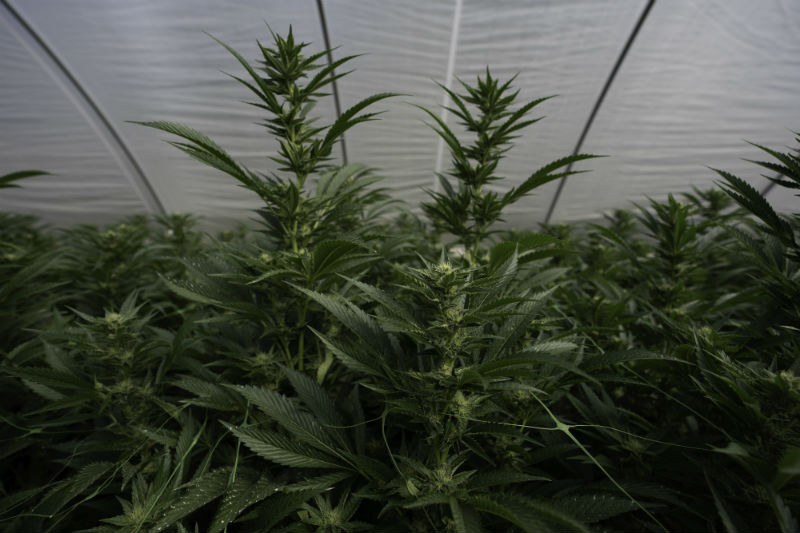
The Plants

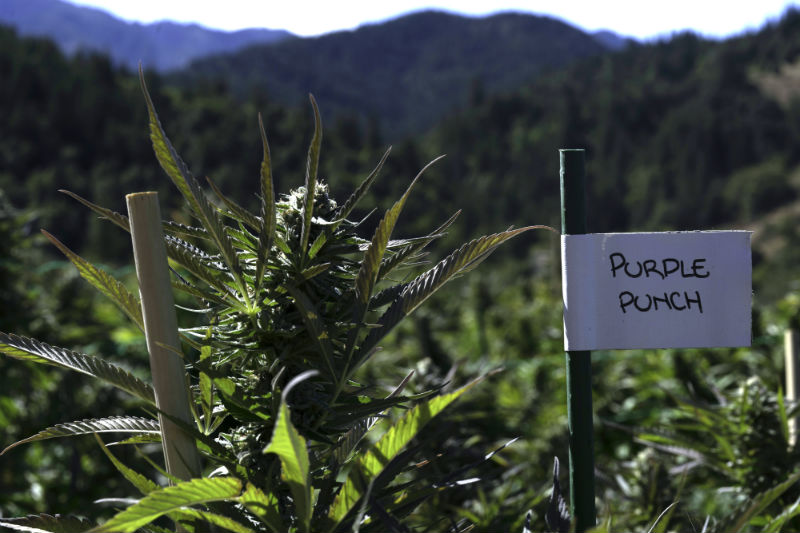
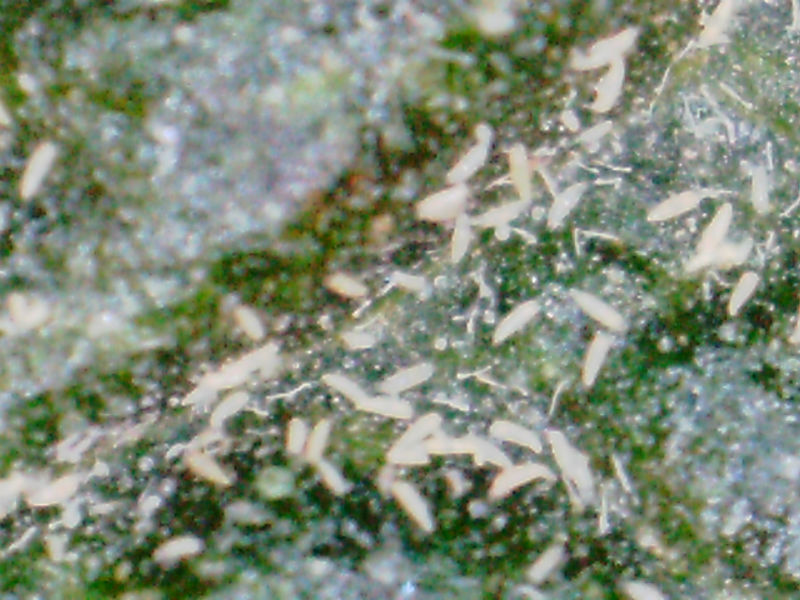 Russett mites under a microscope. Image courtesy of Medicinal Genomics.
Russett mites under a microscope. Image courtesy of Medicinal Genomics.Guiding Philosophy

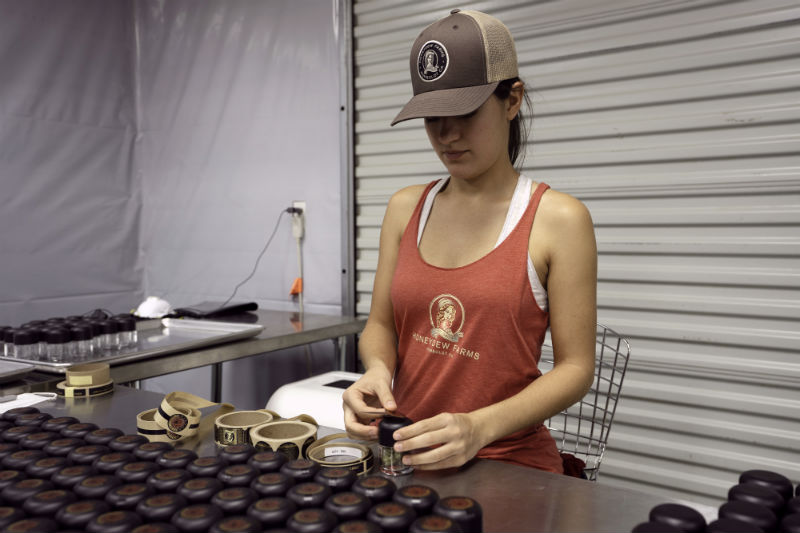 Packaging
PackagingAbout Alex Moore and Honeydew Farms

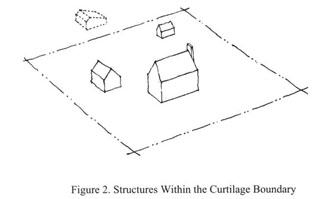
Want to grow like Honeydew Farms in Canna Cribs Episode 5?
Follow the links for everything you need!
- Genetics:
- Vegetation:
- Flowering:
- Curing and Drying: Ideal Air Dehumidifier
- Packaging:
10 Best Gift Ideas for Cannabis Connoisseurs and Growing Aficionados (2022)
December 7, 2022Developing and Optimizing a Cannabis Cultivation System
December 14, 2021Dealing with Insomnia: How Can CBD Help?
December 10, 2020Your Guide to Sleep and CBD
December 7, 2020
Do you want to receive the next Grower's Spotlight as soon as it's available? Sign up below!
Want to get in touch with Honeydew Farms?
You can reach them via the following methods:
- Website: https://www.honeydewfarms.com/
Want to see other Canna Cribs Episodes?
Check these out:

Do you have any questions or comments?

About the Author
Hunter Wilson is a community builder with Growers Network. He graduated from the University of Arizona in 2011 with a Masters in Teaching and in 2007 with a Bachelors in Biology.